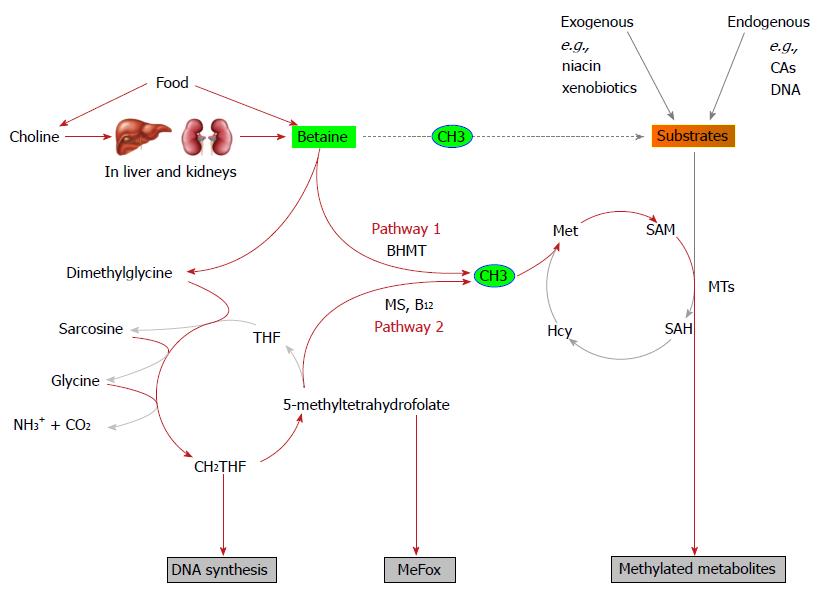Copyright
©The Author(s) 2015.
World J Diabetes. Aug 25, 2015; 6(10): 1158-1167
Published online Aug 25, 2015. doi: 10.4239/wjd.v6.i10.1158
Published online Aug 25, 2015. doi: 10.4239/wjd.v6.i10.1158
Figure 1 Relationship between methyl donors and mediators in the methylation of substrates.
Methylation is a methyl-group transfer reaction from a methyl donor to a substrate, which is mediated by the methionine (Met) cycle. The deep red-arrow lines indicate the flow/transfer of methyl groups/one-carbon units from dietary sources to substrates. In this regard, methylation can be considered as a reaction between betaine and substrates (dashed line). An increase in the levels of substrates will increase the demand for betaine rather than for methylation mediators, e.g., folate and vitamin B12 (B12), because betaine is a non-renewable resource, while the mediators can be recycled if there is an adequate supply of methyl donors. Pathway 1: Betaine-dependent homocysteine (Hcy) remethylation; Pathway 2: Folate-dependent Hcy remethylation. BHMT: Betaine-homocysteine-methyltransferase; CAs: Catecholamines; CH2-THF: 5,10-methylene tetrahydrofolate; CH3: Methyl groups; MeFox: An oxidation product of 5-methyltetrahydrofolate; MS: Methionine synthase; MTs: Methyltransferases; SAH: S-adenosylhomocysteine; SAM: S-adenosylmethionine; THF: Tetrahydrofolate.
- Citation: Zhou SS, Li D, Chen NN, Zhou Y. Vitamin paradox in obesity: Deficiency or excess? World J Diabetes 2015; 6(10): 1158-1167
- URL: https://www.wjgnet.com/1948-9358/full/v6/i10/1158.htm
- DOI: https://dx.doi.org/10.4239/wjd.v6.i10.1158









